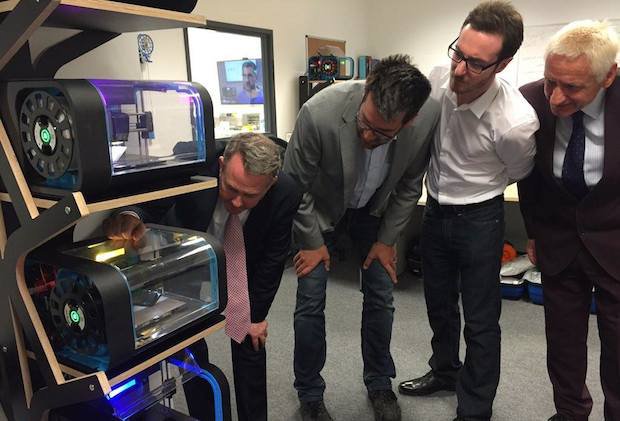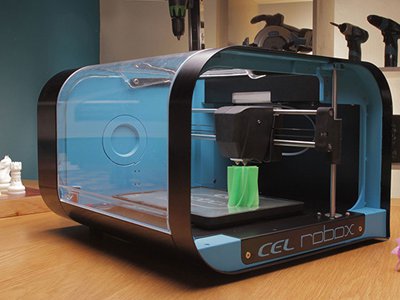Chris Elsworthy Interview: 3D Printing in STEM
Posted by Jacqui Adams on
Taken From TCT Magazine

.
Exciting things have been going on at CEL HQ this month as Liam Fox, MP of North Somerset and Andrew Barker from the James Dyson Foundation paid a visit to talk about how 3D printing is boosting engagement in STEM (Science, technology, engineering and maths) subjects in UK schools.
We spoke to Chris Elsworthy, founder and inventor of the Robox to find out more.
Hi Chris, tell us about what’s been going at CEL to help engage children in STEM subjects?
We’ve done a number of things to try to get engineers and young scientists motivated and excited about engineering and. We think that this (partnering with the James Dyson Foundation) is an awesome way to engage children in an area that sometimes can be boring or where they aren’t allowed to use the tools. 3D printing is a way to let children get hold of the technology and use it to produce a huge variety of products with very low risk or very little training and that’s why we think it suits STEM and education in general really well.
The Robox 3D printer is already in thousands of UK schools – have you noticed a change in attitude towards the technology and STEM subjects in general?
The truth is it’s probably too early to tell. I think there are individual children that are getting more excited about engineering but whether we can make a bigger more global difference or even a national difference, it’s a bit early to tell. When we speak to schools it’s not the first time they’ve
seen a 3D printer and in many cases they’re on to their second round of 3D printers. They might have brought some other brand back in the day when it started to become popular but now they’ve got a much better idea of how they can fit it into the general syllabus. No when they make a choice for the printer it’s a much more informed choice, some of the features on our machine like the enclosed build volume and you don’t have to programme the information – these are the feature they’re looking for in a 3D printer. The first machine they bought, it was just because they needed a 3D printer and it might only be used or rolled out during parent’s evening to show that the school is forward thinking but as soon as the parent’s evening finished it gets put back in its box until the next parent’s evening. I think from the schools we’ve seen and the schools we’re working with now they’re using it on a very regular basis helping not just design and technology but also the sciences and even through to drama where we’ve seen schools printing medallions and brooches for a Shakespeare play – it’s penetrating into education in a much broader way than I personally imagined.
This simplicity must be a welcome change not just for students but for teachers too?
Just like any technology like the whiteboards or 3D printers they just want to be able to press print and something comes out. Robox doesn’t scare people off because it’s simple. I think it’s a change we’re seeing in society in general now. 10 years ago it wasn’t cool to be a geek, being a geek you were an outcast, and now the geek trend is the cool way forward. You can see the public dressing to portray a geek outlook and wanting to be into science and technology, wanting to have the latest technology and I think that’s why 3D printing is going to be so relevant in the coming years.
Finish Interview here
Share this post
- Tags: 3D in classroom, 3d printing, STEM

